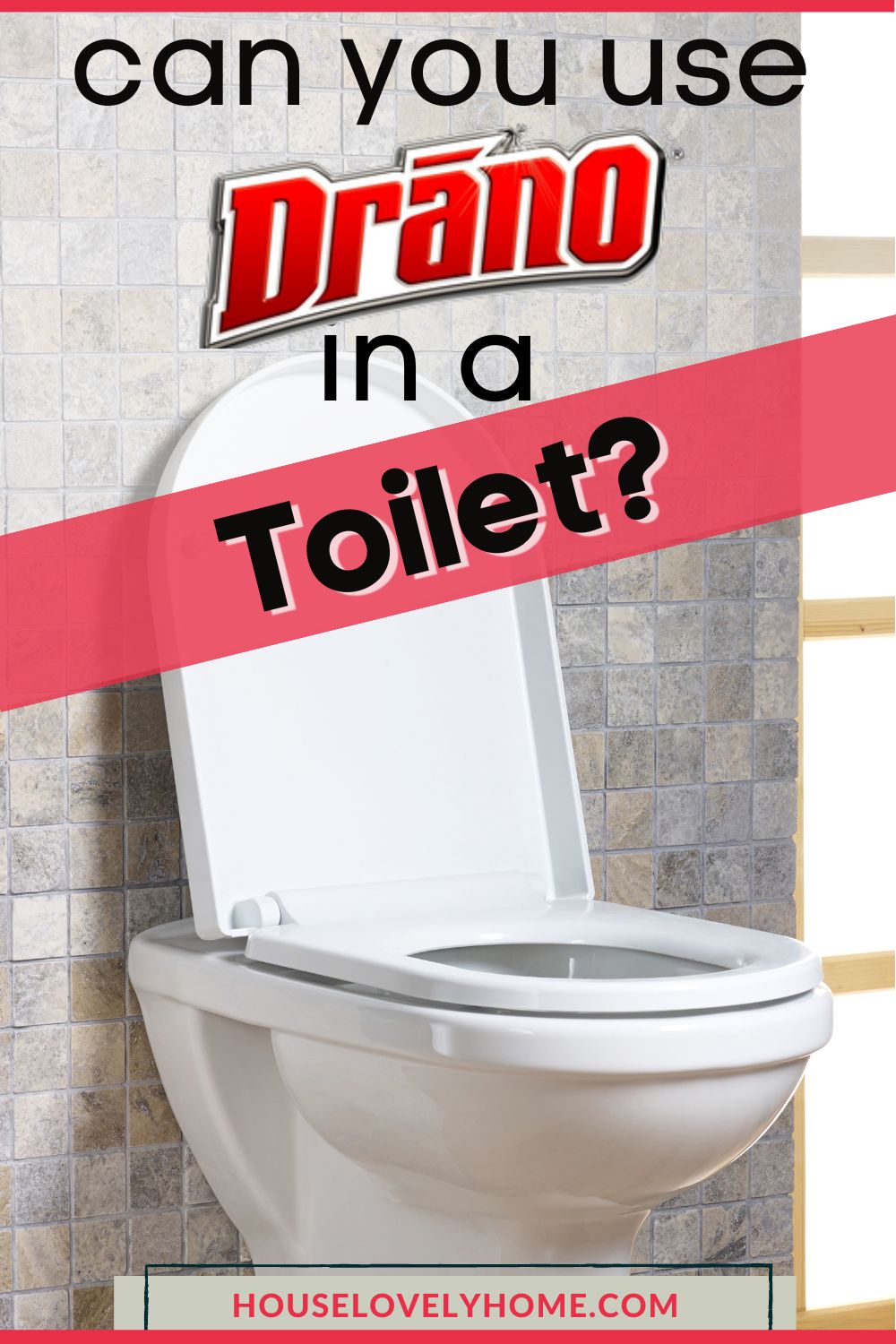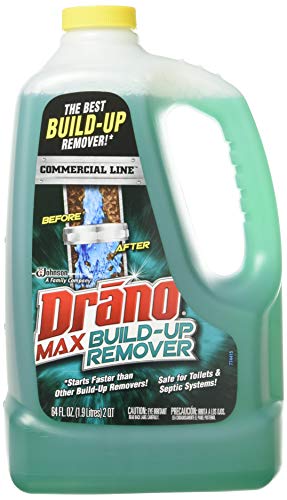Drano is a household name for a reason – it can take care of some serious clogs. But did you know that you should never use it in your toilet?
That’s right – using Drano in your toilet can actually create some pretty harmful chemical reactions.
In this blog post, we’ll tell you why you should never use Drano in your toilet and what to do if you have a clog.
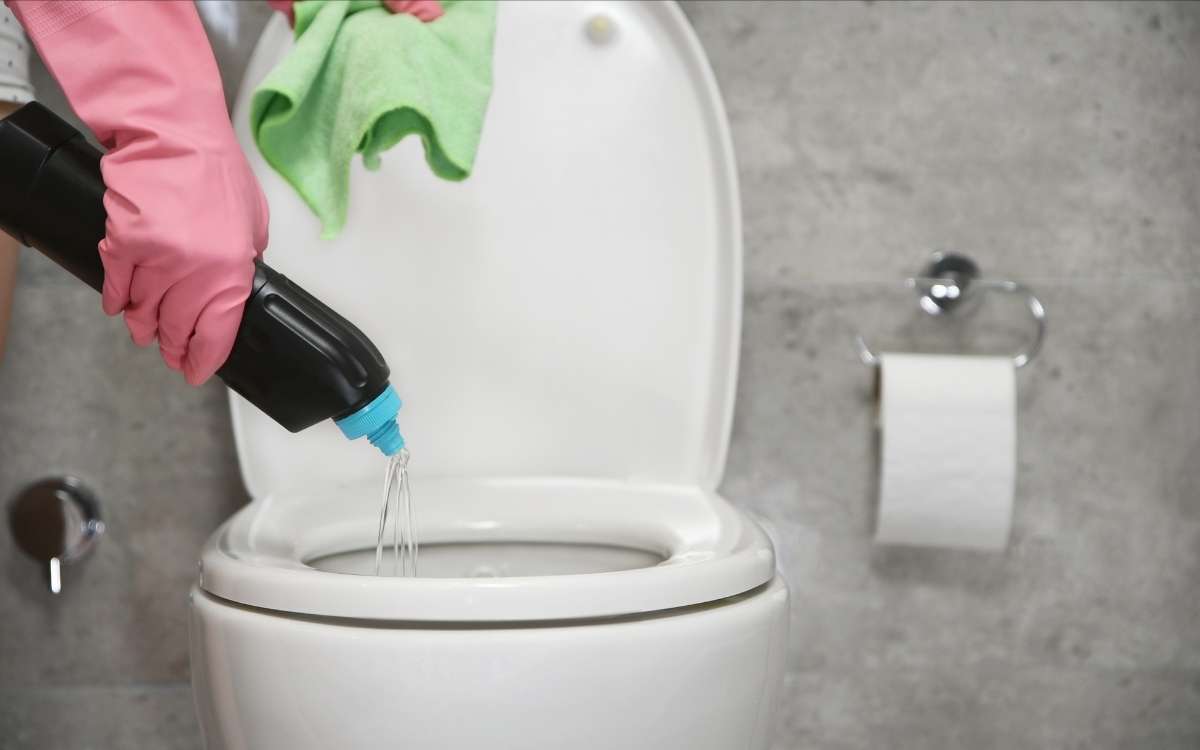
Table of Contents
Can You Use Drano in a Toilet?
Avoid using Drano to remove clogs in your toilet. This product is designed to work with sink clogs and a toilet’s plumbing system is designed differently. This means that the Drano won’t be able to reach the toilet clog and you’ll end up with an overflowing toilet and a big mess.
Drano can also cause some serious chemical reactions when mixed with other household cleaners.
So if you use Drano in your toilet and it doesn’t work, it won’t be safe for you to try another chemical method.
Even “natural” products don’t react well with Drano. Vinegar is a popular natural cleaning product, but it should never be mixed with Drano.
The combination of these two products can create toxic chlorine gas.
What Happens if You Put Drano in the Toilet?
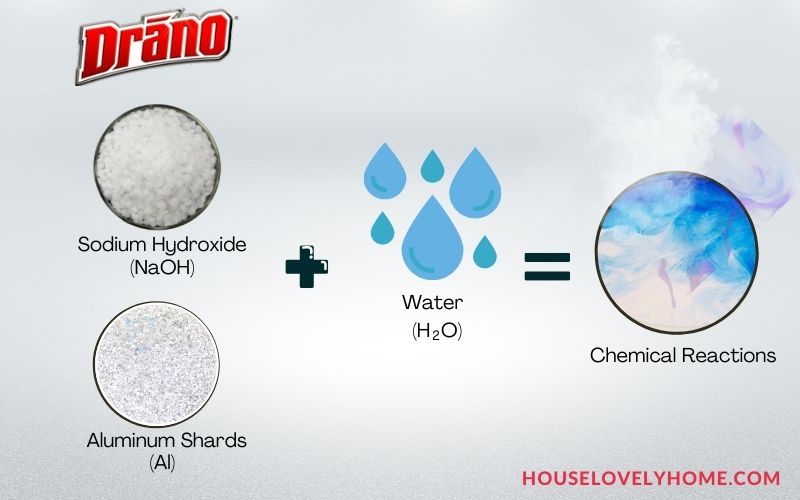
Let’s dig in a bit deeper and talk about what happens when you use Drano in your clogged toilet.
Drano is made of sodium hydroxide and aluminum shards. When these ingredients come into contact with water, they create a chemical reaction that generates heat.
This reaction can actually melt pipes and cause serious damage to your plumbing system instead of getting rid of toilet clogs.
Your PVC pipes aren’t designed to withstand that kind of heat, and the process could weaken or soften them. This means that you could end up with a serious leak – and a big repair bill.
So, essentially, you’ll end up with a handful of problems rather than just one.
As mentioned above, you may also experience an oxidizing chemical reaction. This happens when the Drano comes into contact with other cleaning products in your home, like bleach.
When these two products mix, they create toxic chlorine gas. This gas can be very harmful if you breathe it in, and it can cause burning and watery eyes, coughing, nausea, and difficulty breathing.
So if you have cleaned your toilet beforehand with one of these reactive products, it’s especially important that you avoid using Drano.
If you do use Drano in your toilet and notice these symptoms, open a window and leave the area immediately. You should also call poison control or a local emergency number for help.
Can You Use Any Drano Product in the Toilet?
Only Drano Max Build-Up Remover is recommended for use in slow-running toilets.
It contains microorganisms that break down organic matter in pipes, which can hinder water flow. It will not, however, clear a blocked toilet drain.
If you have a slow-running toilet, 4 ounces of Drano Max Build-Up Remover should be flushed down the toilet for three days in a row.
Avoid flushing your toilet for 6-8 hours after each treatment, so do it before going to work or going to bed.
Drano recommends repeating this process every 4 weeks for a slow-running toilet.
What Should You Do if You Have a Clogged Toilet?
So what should you do if you have a toilet clog? Here are some of the most common solutions that will remove your toilet clogs without causing any further damage:
1. Try a Plunger
A good old-fashioned plunger should be your first line of defense for a clogged toilet. Plungers work by using suction to push the clog down the drain.
You may have to put some elbow grease into it, but a plunger can usually take care of most toilet clogs. Just make sure that you have a good seal around the plunger before you start plunging.
2. Use a Toilet Auger

Toilet augers are specifically designed for toilets, so they’re a great option for removing clogs.
These devices work by pushing the clog down the drain with a flexible spiral cable.
A toilet augur is a great alternative to putting Drano in your toilet because it is powerful but doesn’t use any chemical drain cleaners to release your clog.
3. Try Some Dish Soap
Dish soap can help to lubricate organic matter and help it move through the toilet drains. Any dish soap will work, including Dawn, Palmolive, and Ajax.
Pour a cup of dish soap into the toilet bowl and let it sit for a few minutes before flushing.
The dish soap will help to break down the clog so that it can move through the drain.
4. Grab a Coat Hanger
This common household object can make a toilet snake in a pinch. Simply straighten out the coat hanger and then bend one end into a small hook.
Feed the straight end of the coat hanger down the toilet trap until you feel resistance.
This is likely the clog. Then, use the hook to grab onto the clog and pull it up and out of the drain.
5. Use a Drain Snake

A drain snake is less heavy-duty than a toilet augur but more durable than a coat hanger.
You can affordably purchase a drain snake at most hardware stores.
They are usually made out of plastic or thin light metal.
Feed the drain snake down the toilet until you reach the clog. Once you’ve found the clog, use the spiral wire to break it up so that it can move through the drains.
6. Pour Boiling Water Down the Drain
Sometimes, all you need is some hot water to loosen up a clog. Boil a pot of water and then carefully pour it down the drain.
Pouring boiling water down your toilet can help to break up organic matter and grease that is causing a clog.
Just be careful not to pour too much at once or you could crack your toilet bowl.
7. Use Baking Soda
Baking soda is a natural solution that may passively and gently work on your clogged drains.
It can help to break down toilet paper and human waste that’s causing the clog.
To use this method, mix one cup of baking soda with two cups of boiling water.
Once it’s cooled slightly, pour the mixture down your drain and let it sit for at least an hour.
You may need to do this a few times to see results.
8. Call a Professional Plumber
If you’ve tried all of these methods and you’re still dealing with a clogged toilet, it may be time to call a professional plumber.
Plumbers have the tools and experience to quickly and effectively fix your problem.
They can use a high-powered water jet to remove the clog or a drain camera to figure out where the clog is located.
Either way, a professional plumber will be able to get your toilet unclogged and working properly in no time.
What’s Causing my Toilet Clog?
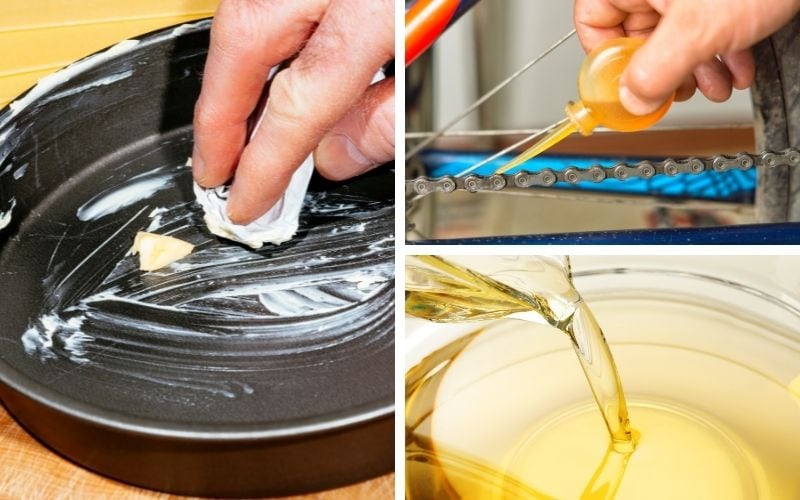
If you want to know how to treat a clogged or slow toilet properly, you need to know what caused the clog in the first place. Here are some of the most common culprits:
1. Too Much Toilet Paper
This is the number one cause of clogged toilets. Be mindful of how much toilet paper you’re using and try to use less.
If you have small children in your home, teach them how to properly use the toilet so that they don’t put too much toilet paper down the drain.
2. Human Waste
Another common cause of toilet clogs is human waste. Sometimes it’s necessary to flush a few times if there is a lot of material.
3. Baby Wipes and Feminine Products

You should never flush baby wipes or feminine products down the toilet. These items don’t break down like toilet paper and they can cause serious clogs.
If you must dispose of them, put them in the trash instead.
4. Grease and Oil
You should never pour grease or oil down your toilet drains because they can solidify and cause clogs. If you have any grease or oil that you need to dispose of, put it in a container and throw it away.
Hot water does a good job of dislodging grease and oil because it can help return them to a liquid state.
5. Deeper Clogs in the Sewer Line
If you have a clog that is located further down in the sewer line, it will be more difficult to fix on your own.
This type of clog requires professional help because they need specialized tools to reach the clog. It may also require more than one visit to fix the problem completely.
6. Tree Roots in the Sewer Line
Sometimes tree roots can grow into your sewer line and cause a clog. This happens over time and is usually the result of a crack or hole in the sewer line.
If you have this problem, you’ll need to call a professional plumber to fix it unless you have professional experience.
The Bottom Line
You should never put Drano in your toilet because it can harm you and your home. If you have a clogged toilet, there are several things you can do that are much safer and more effective.
So, the next time your toilet is clogged, try one of these methods instead of reaching for the Drano.
Do you have any other tips for unclogging a toilet? Share them with us in the comments below!
